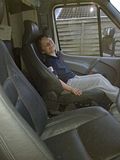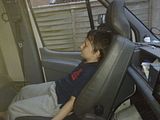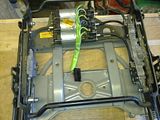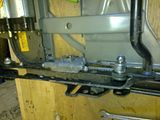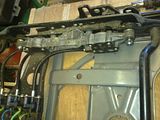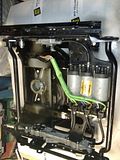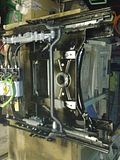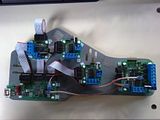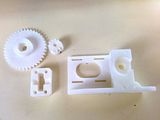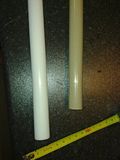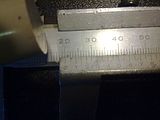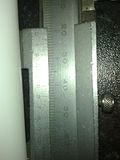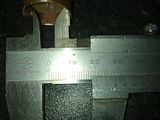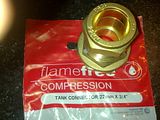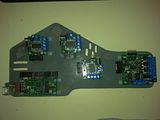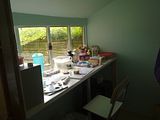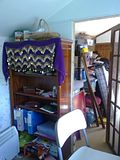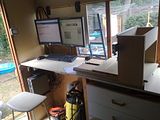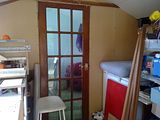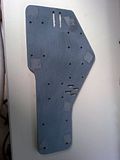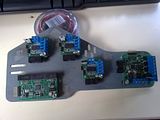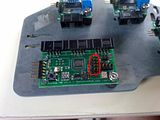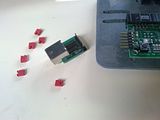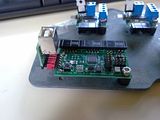Having completed the ScrapStrap hardware, I figured it was time to dig out the
Tech Zone Remix electronics that I bought (I bought directly from
Kimberly at Tech Zone, but you can now buy them from
BotMill)
There is a
HowTo page on the wiki which I hope to help update, but thought I should keep a record of what I do, as I do it so that I can be sure what works and doesn't. Hence this page. I will be including pictures as I go. This page does not intend to replace the
HowTo page or other resources, but should rather be seen as a record of the steps I followed.
Step 1: Mounting plate
Choose and make a mounting plate. As per the HowTo page, these electronics are so much smaller that they don't need to use that original thick sheet. Choosing and making the plate at this point means that you can make the wire lengths to suit.
The material was a piece of ABS plastic which had formed part of the cover of a plan printer which I stripped recently. I kept the plastic covers in case I could recycle the ABS at some time in the future.
Step 2: Unpack and mount
Unpack the the electronics (be careful of static). The first picture was taken removing the bubble wrap, but while still in the anti-static bags. Mount all the pcbs on your mounting plate. (I don't have enough stand-off's so will only complete assembly when I have bought some more. I mocked it up in the meantime)
Step 3: Ground points
Mark the ground pins on all the connectors (
see this image). At this point a slight diversion happened as I noted that one of the 10 pin connectors was not in place on the main board. I emailed Tech Zone, but as I didn't feel like waiting to find out if there was a reason for it to be missing I went ahead and fitted one (before and after pics below). I salvaged the connector off an old PC motherboard I had lying around for just such a reason. When de-soldering these I find the best strategy is to remove the plastic bit first and then de-solder one pin at a time. The connector can be reassembled again afterwards.
Step 4: USB/TTL Board to Mainboard connection
Here I followed the lead of those who had gone before and decided to use The Jumper Technique. Instead of creating a cable for linking the USB board, simply use 6 jumpers. This needs the jumpers that have holes right through. I scrounges some of the old motherboards and bits that I have lying around. I'll probably change this to a wired connector in the future once I can print a USB mounting block in order to ensure a firm mounting.
According to the HowTo page, the boards come with the Makerbot firmware installed. This means that a boot-loader doesn't have to be installed, but the firmware must be updated. This is a new area for me. I am a software developer by trade, but for Windows, not embedded so haven't had to do this before. I'll be continuing with a detailed breakdown in
Part 2

